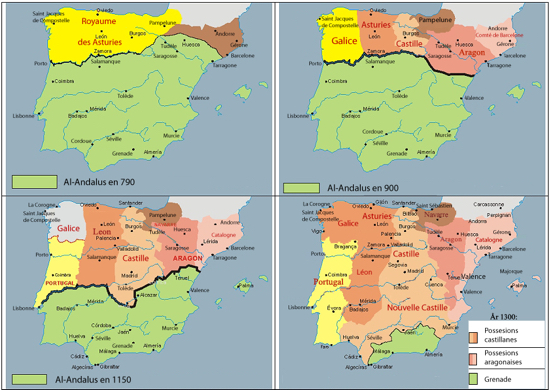
I like that question reader Zsa Zsa, if indeed that is your real name! It’s popularly said that the Islamic occupation of the Iberian peninsula lasted for 800 years. While it may technically true in that there were Arabs on what is now Spanish soil all of that time, the Caliphate that was established there was always in flux. In fact you can make the case that Al Andalus started shrinking from virtually the moment it was established.
The invasion commenced in 711 A.D. when the first Arab conquerors crossed over at Gibraltar, having swept through all of the Middle East and North Africa over the previous 90 years. By 720 nearly the entire territory of what is now Spain and Portugal was united under a Caliphate. A capitol was set up in the southern city of Córdoba, which in relatively short order (150 years) became one of the dominant economic and cultural centers in all of Europe and the Middle East. This “golden age” didn’t last terribly long however, as infighting soon divided up the Caliphate into some 20 separate states, which fought with outsiders and one another until they eventually began to fall to Christian powers pressing in from the north.
READ ON

